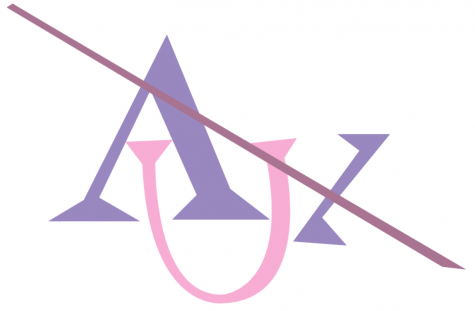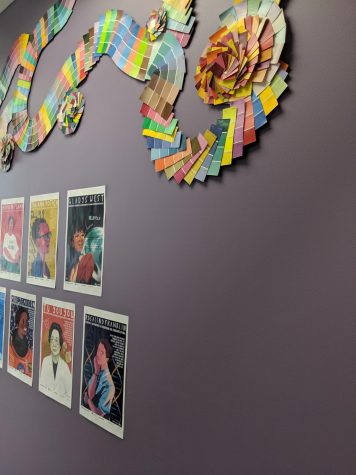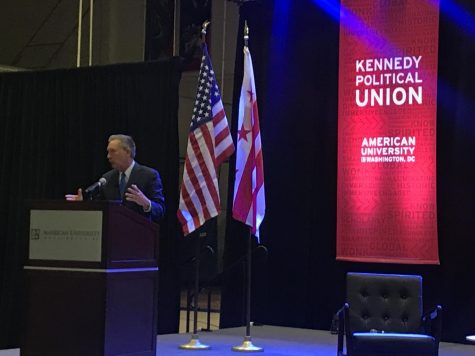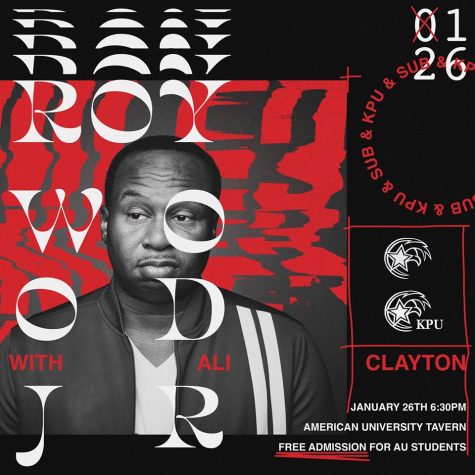From the Blacktop to the Blackboard Hip-Hop’s Growing Role in Education
With two sets of turntables and a mountain of vinyls visible from the outside window, it’s clear that work at Words Beats & Life is a bit atypical. Located in a corner church in Columbia Heights, the office overlooks the church auditorium, which sometimes doubles as a WBL classroom and event space.
What started as a hip-hop conference at the University of Maryland in 2000 has since evolved into a DC non-profit that aims to use hip-hop to strengthen communities.
Today, it’s graffiti. A potential student, about 12 years old, sits at a table looking over some forms and asks a staff member how to spell graffiti.
“Is it G-R-E-…”
“No, it’s G-R-A-F-F-I-T-I.”
A couple moments later, he asks again.
“You said it was G-R-E-F-F-I-T-I?”
“No, G-R-A-F-F-I-T-I. You should get your ears cleaned.”
“I did,” the student jokes in his defense. “Last week.”
The idea of hip-hop culture being used to teach spelling might be a novel one. But it’s only part of the latest chapter in one of the greatest success stories ever told: the story of hip-hop. What started in the late 1970s as a counterculture movement in the South Bronx has grown into a multifaceted global phenomenon. Hip-hop has landed in South Africa, South Korea and just about everywhere in between. It has endured corporate commoditization and media denigration; it has challenged politicians and struggled with sexism.
Hip-hop has always been controversial. Civil rights activist Delores Tucker lambasted it as “drug-driven, race-driven and greed driven,” while rapper KRS-ONE has lauded what he calls “Edutainment,” hip-hop’s blend of education and entertainment. It may have taken over 30 years, but now hip-hop is reaching the academic world, becoming both a subject of study and a tool for education.
***
AU recently hosted a panel titled “The Falsehoods and Misconceptions about Hip-Hop,” which illustrated the ground hip-hop has gained in academia.
“It’s not the scary thing that you can’t have in the classroom,” said Paige Hernandez, one of the panelists. As both an artist and educator, Hernandez has helped curate workshops on the incorporation of hip-hop into the classroom. Her choreography has been featured in multiple shows, most recently in DC/NYC’s Hip-Hop Theatre Festival, and her one-woman show,
Paige in Full: A B-girl’s Visual Mixtape, is back in DC for a second run.
One point the panel raised was that for a youth culture, hip-hop isn’t that young. Its originators are middle-aged. Kool Herc has health problems. Snoop Dogg is pushing 40. Rev Run and his teenaged kids have a reality show.
The movement has grown up. The people who’ve been educated by hip-hop are now the ones teaching it. As it has matured, hip-hop has expanded to new mediums like literature, theatre, film and academia.
“It wasn’t my first English teacher,” said panelist Kyle Dargan, “but it was the first English teacher that I ever listened to.”
Dargan, a professor of literature and creative writing at AU as well as editor and founder of
Post No Ills magazine, was on the advising board for a book that came out last year called The Anthology of Rap. The anthology is composed of over 300 rap lyrics from the last 30 years. In his review for New York Magazine, Sam Anderson, a self-proclaimed hip-hop illiterate, called it “the English major’s hip-hop bible.” The anthology also made his Top 10 Books of 2010.
Like Dargan, many are finding that hip-hop and academia are not that different.
Current WBL editor Simone Jacobson spoke to the panel about her experience witnessing how hip-hop can help bridge education gaps.
In 2010, Jacobson led a group of eight international hip-hop dancers on a four city US tour sponsored by the US State Department. A year earlier, she co-founded Sulu DC, a monthly showcase of DC-based Asian and Pacific-Islander American artists.
Jacobson now works as director of The Cipher, a part of WBL that focuses on networking with other hip-hop-based organizations. The Cipher hosts teach-ins designed to develop programs and curricula based on hip-hop culture. The teach-in titled “Remixing the Art of Social Change: A Hip-Hop Approach” has plans to travel to Chicago by the end of 2011.
Jacobson is also editor of
Words. Beats. Life: The Global Journal of Hip-Hop Culture. The biannual publication is the world’s only peer reviewed journal on the subject of hip-hop culture.
The latest issue — “The Sex Issue” — addressed gender and sexuality. It featured work from Holly Bass, a poet-in-residence at Busboys & Poets, Kelly Zen-Yie-Tsai, a world-renowned spoken word artist, as well as other scholars, artists and poets.
The DC Urban Arts Academy, the other side of WBL, has a more local focus. The Academy offers classes based on the four elements of hip-hop, challenging students to work both creatively and academically. Students learn skills such as DJ-ing or emceeing while also learning how to market themselves through portfolios, applications and resumes — skills that could be applied to either a record deal or college application. Hopefully both.
Another DC based organization, H.E.L.P., Hip-Hop Educational Literacy Program, uses lyrics from artists such as Lauryn Hill, Common, T.I. and Rakim to promote literacy. Recently, Patrick MacMahon and Jeff Williams, AU students and DC Reads tutors, hosted a workshop about the program, focusing their presentation on the work of Nas.
“Sometimes younger kids — and ourselves included — feel like we lose our identity in schools. H.E.L.P takes what the child already loves and embraces it.”
The H.E.L.P. program has been praised by both artists and scholars, including Raekwon, Cornel West and Barack Obama.
In St. Paul, Minn., David Ellis, former Paisley Park Studio producer and Prince collaborator, has integrated hip-hop and education in the form of a school. The High School for Recording Arts, nicknamed Hip-Hop High, is part recording studio and part traditional school. Students are rewarded for good behavior and grades with time in one of the school’s recording studios, where they can champion and record their own music.
The school is a safe haven for troubled students. Many have dropped out of other schools and are behind in credits. In 2010, about half of the students did not live with a legal guardian and one-fourth lived with a legal guardian with an addiction.
“My vision initially for the school was to solve a problem that I saw in the community: a lot of young people were dropping out of school,” Ellis said in a video for the Minneapolis
City Pages. “I knew through their passion with the music industry and what they wanted to experience that it would be a great motivator.” When it opened in 1998, the school had 15 students. It now has more than 220 students and has sparked sister schools in Los Angeles, New York, and most recently, Portland, Ore.
***
As hip-hop and formal education begin to intertwine, some remain skeptical. What does it mean when a rebel culture begins to integrate with the institutions it was created to rebel against?
Hopefully, as people begin to see hip-hop’s value in the classroom, it won’t be reduced to just another teaching tool.
Stephen Vassallo, a professor in AU’s School of Education, Teaching and Health, spoke to how Paulo Freire’s theory of critical pedagogy could possibly be applied to hip-hop’s growing role in education. Freire was a Brazilian educator who viewed conventional education as a way of reproducing and reinforcing cultural and social hierarchies. Rather than reproduce a “dominant culture,” Freire believed that education should draw upon the lives of the people being educated.
For instance, in the classrooms of urban DC, Freire would probably argue that the poetry of Tupac would resonate with students much more than the poetry of Shakespeare.
“Hip-hop is used as a means to teach an end point, a better end point,” said Vassallo, “but when does it become the end in itself?”
As hip-hop and formal education begin to intertwine, some remain skeptical. What does it mean when a rebel culture begins to integrate with the institutions it was created to rebel against?
As hip-hop finds its way into teaching curricula, it has the potential to build some common ground between teachers and students. It’s an uncultivated medium that can help create a dialogue between both groups.
Educators might go through Tupac to speak about Shakespeare or
Style Wars to get to Van Gogh. Education could be on the verge of a much-needed revamp.
While this might be enough for now, it begs this question for the future: if Tupac can be used to teach Shakespeare, when will Tupac be used to teach Tupac?
Instead of hip-hop being used to teach other subjects, when will other subjects be used to teach hip-hop?






